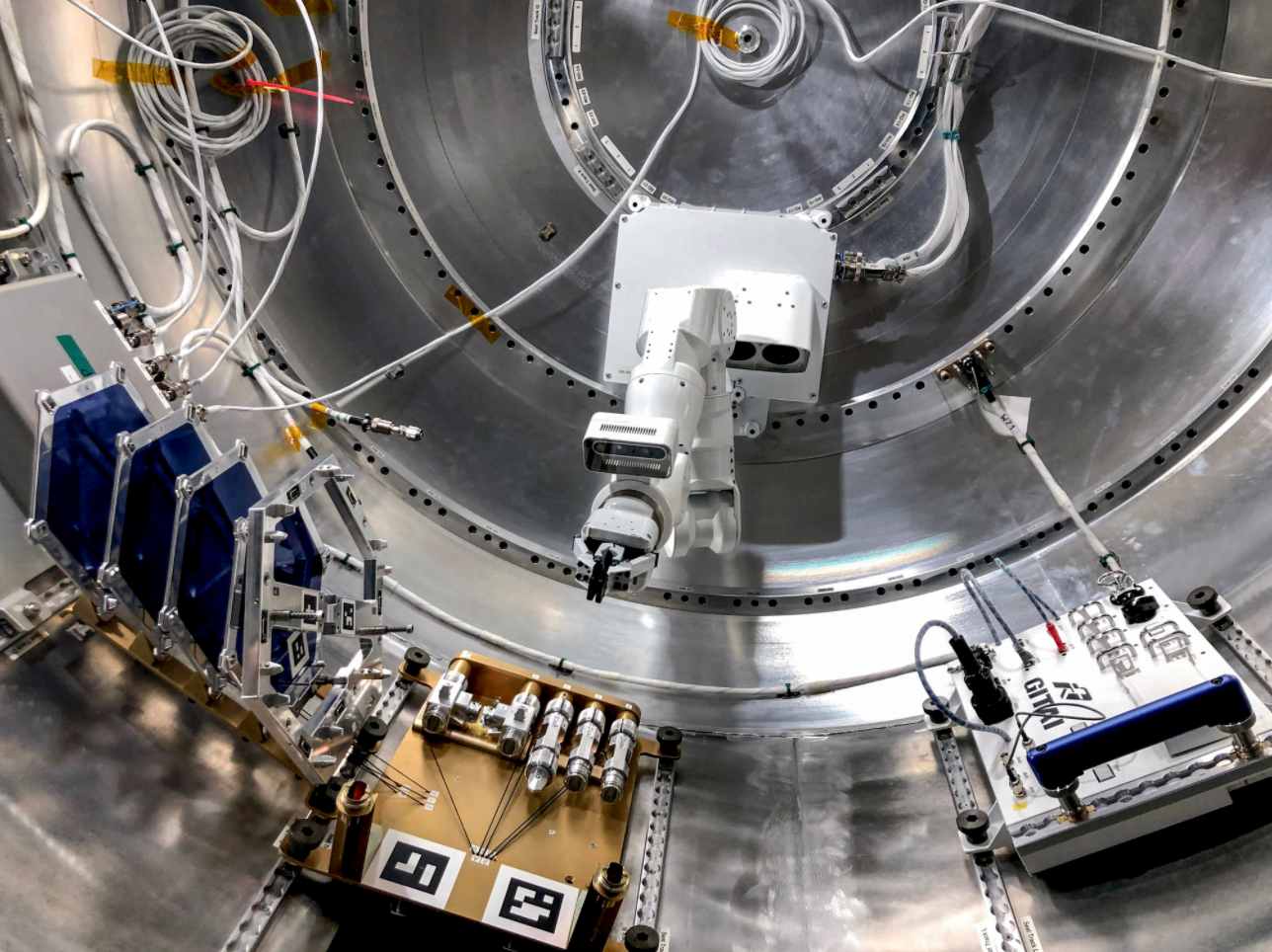Station Science Top News: Oct. 20, 2021
The GITAI S1 Robotic Arm Tech Demo being conducted aboard the International Space Station tests the ability of a robotic arm to perform small tasks in space that could reduce the cost of spacecraft operations and improve safety.
This past week, crew members installed the GITAI S1 Robotic Arm Tech Demo into the Bishop Airlock aboard the International Space Station. For the demonstration, the robot conducts common crew activities and tasks through supervised autonomy and virtual reality commanding from the ground. Tasks to be performed include pushing buttons, flipping switches, and mating various types of connectors. Robotic labor could reduce the cost of spacecraft operations and improve safety by taking on tasks that could expose crew members to hazards.

Complete configuration of the GITAI S1 inside the Bishop Airlock mock-up. For the demonstration, the robot conducts common crew activities and tasks via supervised autonomy and teleoperations from the ground. Credits: NASA
***
Researchers behind the NanoRacks-CellBox-Thyroid Cancer experiment have reported that human thyroid cancer cells adapted to the microgravity environment when exposed for a long duration. These results could identify biomarkers capable of helping the development of new cancer treatments.
NASA’s NanoRacks-CellBox-Thyroid Cancer experiment sent human thyroid cancer cells to the space station to identify biomarkers in the DNA that could be used to develop drugs to treat thyroid cancer. Biomarkers are hereditary information that can signal normal or abnormal processes in the body and help us better understand the development of cancer. Researchers analyzed changes in growth, gene, and protein expressions in the cancer cells after prolonged exposure to microgravity. Scientists found that the count of exosomes, which are important for cell-to-cell communication, increased by 74% in flight samples compared to ground samples. The team also observed differences in surface protein expression. These results point to an adaptation of the cells to microgravity and could lead to the discovery of new biomarkers.
 NASA astronaut Steve Swanson, Expedition 39 flight engineer, works with NanoRacks hardware in the Kibo laboratory of the Japan Aerospace Exploration Agency. Credits: NASA
NASA astronaut Steve Swanson, Expedition 39 flight engineer, works with NanoRacks hardware in the Kibo laboratory of the Japan Aerospace Exploration Agency. Credits: NASA
***
Six months of data from the space station mounted Mini-EUSO Earth telescope confirmed the tool is working properly. The study could provide data on climate effects, marine pollution, and space-debris removal.
ROSCOSMOS-ASI investigation Mini-EUSO is a multipurpose telescope designed to operate at night. It is part of JEM-EUSO, a larger program involving about 300 scientists from 16 countries who are working to enhance the observation of cosmic rays. Analysis of the first six months of data indicate the tool is operating properly, including its ability to measure variations in airglow and ultraviolet emissions from Earth and track space debris ultrahigh-energy cosmic rays. Mini-EUSO’s operation is expected to provide data on climate effects, marine pollution, geomagnetic disturbances, space-debris removal, and possibly predict the 3D path of meteors.







